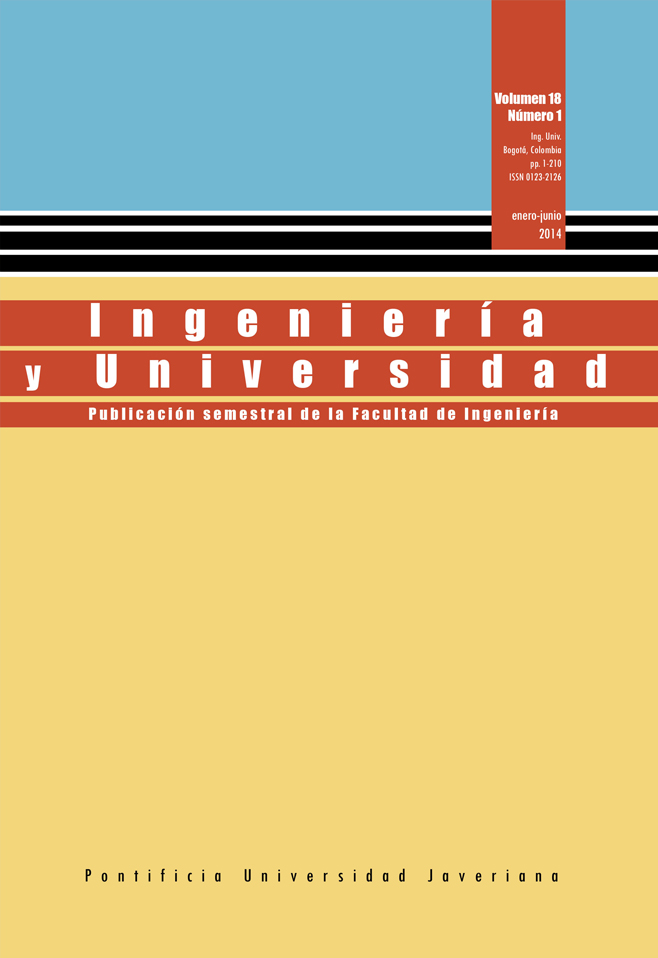Resumen
Este artículo propone un sistema de rehabilitación diseñado para pacientes que sufren de bruxismo, con el fin de que se recuperen sin necesidad de utilizar dispositivos dentro de la boca, los cuales suelen ser molestos para quienes los usan. El sistema está basado en la captura de neuroseñales que detectan la actividad cerebral correspondiente a eventos del bruxismo. Para la detección de estos eventos se empleó un dispositivo comercial BCI de fácil adquisición y bajo precio. El sistema de rehabilitación genera una alerta sonora que impide el desgaste de los dientes a los usuarios sin llegar a despertarlos.
CEJO, P. and LEGAL, L. Effects of the myofascial anchorage and muscular energy techniques in patients with bruxism. Revista Osteopatía Científica. 2011, vol. 6, no. 2, pp. 46-52.
CONSEJOS NATURALES. El bruxismo [document en línea]. http://www.consejosnaturales.com/el-bruxismo.html.
CROWLEY, K.; SLINEY, A.; PITT, I. and MURPHY, D. Evaluating a brain-computer interface to categorize human emotional response. IEEE International Conference on Advanced Learning Technologies. 2010, pp 276-278.
DE MACEDO, C. Placas oclusais para tratamento do bruxismo do sono: revisão sistemática Cochrane. Sao Paulo: Universidade Federal do São Paulo, 2007.
DELA, K. and DE QUEIROZ, J. Bruxismo na infância: fatores etiológicos e possíveis tratamentos. Revista de Odontologia da UNESP. 2006, vol. 35, no. 2, pp. 157-163.
DELGADO, M. and PUJOL, T. Infantile bruxism: an alarm signal. Revista Aten Primaria. 1996, vol. 17, no. 2, 172-173.
EGAN, G.F. Neuroinformatics: development of shared neuroscience databases and tools at the Australian National Neuroscience Facility. Proceedings 2004 IEEE International Joint Conference on Neural Networks. 2004, vol. 1, pp. 25-29.
FRUGONE, R. and RODRIGUEZ, C. Bruxismo. Av Odontoestomatol [online]. 2003, vol. 19, no. 3, pp. 123-130.
GÓMEZ, F. Can bruxism be useful the central nervous system to reduce stress? Gaceta Médica Bilbao. 2001, vol. 98, no. 4, pp. 113-116.
GONZÁLEZ, C. and LANTADA, A.D. A wearable passive force sensor powered by an active interrogator intended for intra-splint use for the detection and recording of bruxism. Pervasive Computing Technologies for Healthcare, 2009. Pervasive Health 2009. 3rd International Conference on, IEEE. 2009, pp.1-4.
GONÇALVES, L.P.; TOLEDO, O.A. and OTERO, S.A. Relação entre bruxismo, fatores oclusais e hábitos bucais. Dental Press Journal of Orthodontics. 2010, vol. 15, no. 2, pp. 97-104.
JAEN, F. El bruxismo, un mal que casi todos padecemos [document on line]. <http://www.saludpanama.com> [Cited: 04-06-2012].
JAUME, S.; KNOBE, K.; NEWTON, R.R.; SCHLIMBACH, F.; BLOWER, M. and REID, R.C. A multiscale parallel computing architecture for automated segmentation of the brain connectome. IEEE Transactions on Biomedical Engineering. 2012, vol. 59, no. 1, pp. 35-38.
KIM, J.H.; MCAULIFFE, P.; O’CONNEL, B.; DIAMOND, D.; LAU, K.T. Development of bite guard for wireless monitoring of bruxism using pressure-sensitive polymer. International Conference on Body Sensor Networks (BSN). 2010, pp. 109-116.
LUO, A. and SULLIVAN, T.J. A user-friendly SSVEP-based brain–computer interface using a time-domain classifier. Journal of Neural Engineering. 2010, vol. 7, no. 2, p. 26010.
MARTÍNEZ, A.; BARRIENTOS, A.; DÍAZ, A.; LAFONT, P.; COLORADO, J.; CASTEDO, P.L. and GONZÁLEZ, R. Polymeric piezoelectric sensors and remote communication for detection of bruxism. International Conference on Industrial Technology (ICIT), 2010 IEEE. 2010, pp. 268-273.
MARTÍNEZ, I.; TOLEDO, B.; PRENDES, T.; CARVAJAL, A.; DELGADO, T. and MORALES, A. Risk facts in patients with temporomandibular dysfunction. Revista Médica Electrónica. 2009.
MONCADA, L.; GALLARDO, I.; AGUILAR, L.; CONEJAN, C.; DREYER, E. and ROJAS, G. Bruxers presents a distinctive style of personality. Revista Chilena de Neuro-Psiquiatría. 2009, vol. 47, no. 2, pp. 105-113.
PALAZÓN, R.; BERROCAL, I. and CABAÑAS, J. Treatment of bruxism with botulinim toxin. Revista Rehabilitación. 2001, vol. 35, no. 4, pp. 253-255.
PALUMBO, A.; PACE, C.; FARELLA, M. and COCORULLO, G. An example of System on Chip design for biomedical applications: bruxism therapy. Instrumentation and Measurement Technology Conference Proceedings. 2007, pp. 1-3.
PÉREZ, M.; LEMUS, L.; ALMAGRO, S. and ROBLEDO, M. Rehabilitación protésica del bruxismo en el adulto. 16 de Abril. Revista Cubana de los Estudiantes de Ciencias Médicas [online]. 2002, vol. 41, no. 1. <http://bvs.sld.cu/revistas/abr/vol41_1_02/abr05102.htm> [Cited: 04-05-2012].
REVISTA BUENA SALUD. Soluciones para quienes padecen bruxismo [article online]. 2009. <http://www.revistabuenasalud.com/bruxismo-soluciones-para-quienes-rechinan-losdientes-al-dormir/> [Cited: 2012-04-20].
REY, A. Bruxismo. Diagnóstico control [document online]. 2010. <http://antonioreygil.blogspot. com/2010/06/el-bruxismo-es-considerado-un-trastorno.html> [Cited 04-20-2012].
SACOTO, M. Estadística sobre el bruxismo en adultos y niños [document online]. <http://mariansacotonavia. com> [Cited: 04-04-2012].
SAKAI, R.; YOSHIDA, H.; KAWAHATA, N.; KIKUCHI, M. and NAKAJIMA, I. Realization of anterior guidance with canine and occlusion by a mastication motion simulator. SICE 2004 Annual Conference. 2004, vol. 2, pp. 1715-1720.
SERRA, J.; PAIVA, S.; SEABRA, A.; DORELLA, C.; LEMOS, B. F. and PORDEUS, I.A. Prevalence of sleep bruxism in a group of Brazilian school children. European Archives of Paediatric Dentistry. 2010, vol. 11, no. 4, pp. 192-195.
STOPCZYNSKI, A.; LARSEN, J.; STAHLHUT, C.; PETERSEN M. and HANSEN, L. A smartphone interface for a wireless EEG headset with real-time 3D reconstruction. Affective Computing and Intelligent Interaction. 2011, pp. 317-318.
Una vez aceptado un trabajo para publicación la revista podrá disponer de él en toda su extensión, tanto directamente como a través de intermediarios, ya sea de forma impresa o electrónica, para su publicación ya sea en medio impreso o en medio electrónico, en formatos electrónicos de almacenamiento, en sitios de la Internet propios o de cualquier otro editor. Este uso tiene como fin divulgar el trabajo en la comunidad científica y académica nacional e internacional y no persigue fines de lucro. Para ello el autor o los autores le otorgan el permiso correspondiente a la revista para dicha divulgación mediante autorización escrita.
Todos los articulos aceptados para publicación son sometidos a corrección de estilo. Por tanto el autor /los autores autorizan desde ya los cambios sufridos por el artículo en la corrección de estilo.
El autor o los autores conservarán los derechos morales y patrimoniales del artículo.


